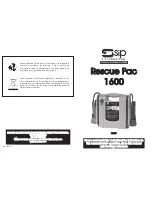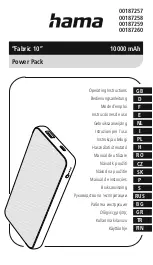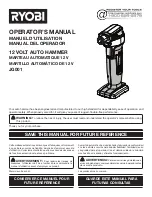
Important!
The vibration value changes according to the area of
application of the electric tool and may exceed the
specified value in exceptional circumstances.
5. Before starting the equipment
Before you connect the equipment to the mains
supply make sure that the data on the rating plate are
identical to the mains data.
Always pull the power plug before making
adjustments to the equipment.
5.1 Safety guard (Fig. 1/Item 15)
The safety guard (15) protects the user from
accidentally touching the saw blade (12) and
nevertheless enables you a free view of the
cutting area.
5.2 Changing the saw blade (Fig. 2/Item 12)
Important!
Pull the mains plug before you fit or replace a saw
blade.
Set the selector switch for pendulum action (8) to
position 3.
The teeth of the saw blade are very sharp!
Undo the screws (a) on the blade holder (14)
using the supplied Allen key.
Insert the saw blade (12) into the guide groove (b)
of the blade holder (14) as far as the stop.
Tighten the screws (a) with the supplied Allen
key.
The teeth on the saw blade must be pointing in
the direction of cutting. Check that the saw blade
is positioned in the guide groove (b) of the blade
holder (14) and the roller.
Check that the saw blade (12) is securely
mounted in the blade holder.
Follow the instructions above in reverse order to
remove the saw blade.
5.3 Installing the parallel stop (Figure 3/Item 11)
The parallel stop (11) enables you to saw parallel
cuts.
Undo the two locking screws (13) on the
soleplate (7).
Now slide the parallel stop (11) into the guides on
the soleplate (7). You can fit the parallel stop (11)
on either the left or right of the equipment.
The guide strip must always face downwards. Set
the required distance using the measurement
scale on the parallel stop (11) and tighten the
locking screws (13) again.
5.4 Setting the soleplate for miter cuts (Figs. 4-5)
Use the Allen key (4) to loosen the screws for the
soleplate (16) on the bottom of the adjustable
soleplate (7) (Figure 4).
Pull the soleplate (7) slightly forward. The
soleplate can now be swiveled a maximum 45° to
the left and right.
If the soleplate (7) is pushed back to the rear
again, it will only function in the locking positions
at 0°, 15°, 30° and 45°, which are marked on the
graduated scale for the soleplate (9) (Figure 5).
Move the soleplate into the required position and
refasten the screw securing the soleplate (16).
However, the soleplate (7) is also easily set to
another angle. To do so, move the soleplate (7)
forwards, set the desired angle and refasten the
screw securing the soleplate (16).
5.5 Adapter for dust extraction system (Figure 6)
The jigsaw is equipped with an adapter for the
vacuum cleaner connection. Place the adaptor onto
the jigsaw and secure by turning it. Any vacuum
cleaner can be connected to the extractor adaptor.
Check that the connections are air-tight. Dust created
when working may be dangerous. Be sure to observe
the safety instructions.
6. Operation
6.1 ON/OFF switch (Fig. 7/Item 3)
To switch on:
Press the ON/OFF switch
To switch off:
Release the ON/OFF switch
6.2 Locking button (Fig. 7/Item 2)
You can lock the ON/OFF switch (3) using the locking
button (2) when the equipment is in operation. To
switch off the equipment briefly hold down the
ON/OFF switch (3).
6.3 Electric speed selector (Fig. 8/Item 1)
You can pre-select the required speed with the speed
selector. Turn the speed selector in PLUS director to
increase the speed and turn the speed selector in
MINUS direction to reduce the speed. The suitable
stroke speed is dependent on the relevant material
and working conditions.
General rules for cutting speeds for metal cutting
work must be complied with here as well.
You can generally use a higher speed with fine saw
12
GB
Anleitung BT-JS 650 E_SPK1:_ 27.11.2007 8:33 Uhr Seite 12













































